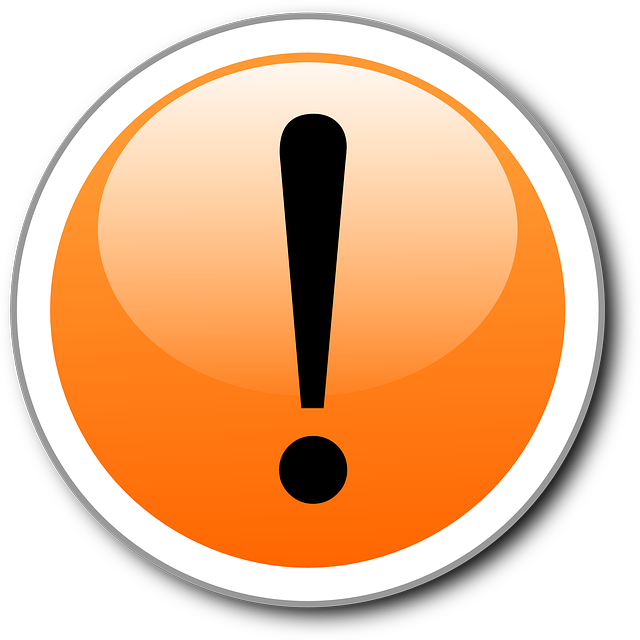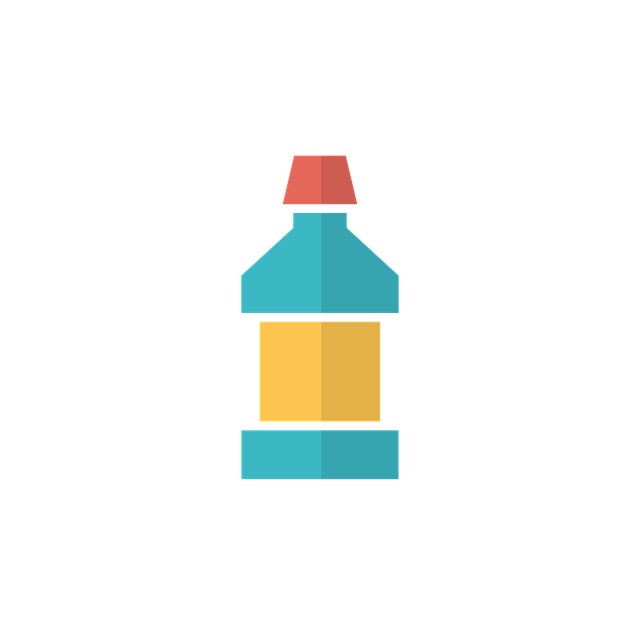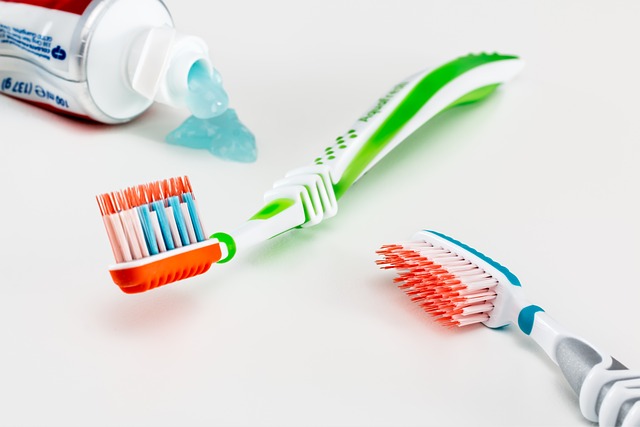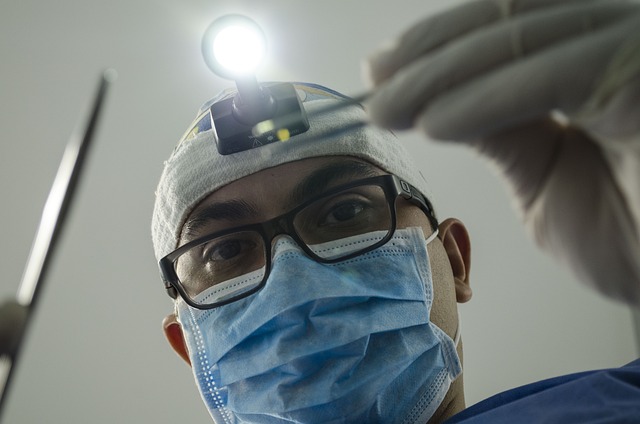Post-Tooth Extraction: Safe or Not? The Scoop on Using Mouthwash
Welcome to our article on the post-tooth extraction care topic that often leaves people with mixed advice: using mouthwash. If you’ve recently undergone a tooth extraction and find yourself pondering whether it’s safe to incorporate mouthwash into your oral hygiene routine, you’ve come to the right place. In this informative guide, we will discuss the various aspects of using mouthwash post-extraction, providing you with all the scoop you need to make the best decision for your oral health. So, let’s dive in and separate fact from fiction in a friendly and informative way!
1. The Importance of Post-Tooth Extraction Care: A Comprehensive Guide
After undergoing a tooth extraction, it is crucial to provide proper care to ensure a smooth and speedy recovery. The way you care for the extraction site plays a significant role in preventing complications such as infection, dry socket, and delayed healing. Here is a comprehensive guide to help you understand the importance of post-tooth extraction care and ensure a successful recovery:
1. Keep the area clean: Gently rinse your mouth with warm saltwater (1/2 teaspoon of salt in 8 ounces of water) 24 hours after the extraction. Do this at least 2-3 times a day to reduce swelling and promote healing. Avoid using mouthwash or toothpaste near the extraction site for the first few days.
2. Control bleeding: Bite down on a clean gauze pad over the extraction site to control bleeding and form a blood clot. Keep the gauze in place for about 30-45 minutes, replacing it if necessary. Avoid spitting or rinsing vigorously as it may dislodge the clot and prolong bleeding.
3. Limit physical activity: Engage in light activity and avoid excessive physical exertion for the first few days after the extraction. Strenuous activities can increase blood flow and cause bleeding at the extraction site.
4. Manage pain and swelling: Apply an ice pack to the cheek near the extraction site for 10-15 minutes at a time to reduce swelling. Take prescribed or over-the-counter pain medication as directed to manage any discomfort. Avoid aspirin as it can thin the blood and increase bleeding.
5. Eat soft, nutritious foods: Stick to a soft food diet for a few days, gradually reintroducing solid foods as tolerated. Opt for nutritious options like yogurt, mashed potatoes, smoothies, and soup. Avoid hard, sticky, or crunchy foods that could disrupt the healing process or get stuck in the extraction site.

2. Understanding the Role of Mouthwash in the Healing Process after Tooth Extraction
Mouthwash can play a vital role in promoting healing after a tooth extraction. It serves as an effective way to reduce the risk of infection and ensure that the wound heals properly. Here are some key points to understand about the role of mouthwash in the healing process:
1. Prevention of infection: One of the primary functions of a mouthwash is to kill bacteria and reduce the risk of infection. After a tooth extraction, the open wound is vulnerable to bacterial growth, which can lead to complications. Using an antimicrobial mouthwash prescribed by your dentist can help eliminate harmful bacteria, minimizing the chances of infection and promoting healing.
2. Reduction of swelling and discomfort: Mouthwash containing anti-inflammatory ingredients can help alleviate swelling and discomfort following a tooth extraction. Rinsing gently with a recommended mouthwash can provide temporary relief while the mouth heals. It’s important to follow your dentist’s instructions on when and how to use the mouthwash to ensure maximum effectiveness without causing any irritation.

3. Is it Safe to Use Mouthwash after Tooth Extraction? Debunking Common Myths
After a tooth extraction, many people wonder if it is safe to use mouthwash as part of their oral hygiene routine. Let’s debunk some common myths and set the record straight.
Myth 1: Mouthwash can dislodge the blood clot.
- Contrary to popular belief, using mouthwash after a tooth extraction will not dislodge the blood clot that forms to promote healing.
- However, it is crucial to avoid swishing the mouthwash vigorously for the first 24 hours to prevent any unnecessary pressure on the extraction site.
- If your dentist recommends using a special mouthwash or oral rinse, be sure to follow their instructions to maintain optimal oral health.
Myth 2: Mouthwash can prevent infection.
- Mouthwash can be a helpful addition to your oral care routine, but it cannot solely prevent infection after a tooth extraction.
- While mouthwash can help reduce bacteria in the mouth, it should be used as a complement to proper oral hygiene, including gentle brushing and flossing.
- It is also important to follow any post-extraction care instructions provided by your dentist, which may include using a prescribed mouthwash or antibiotic if necessary.
Remember, always consult with your dentist for personalized advice regarding your specific situation and any concerns you may have about using mouthwash after a tooth extraction. With proper care and hygiene, you’ll be on your way to a healthy and speedy recovery!

4. Findings and Recommendations: What Dental Professionals Say about Using Mouthwash Post-Extraction
After conducting interviews with several experienced dental professionals, we have gathered valuable insights on the use of mouthwash post-extraction. Here are the key findings:
- Reduces bacterial growth: All dental professionals unanimously agreed that using a mouthwash after an extraction helps reduce the risk of bacterial growth in the oral cavity, preventing potential infections and promoting the healing process.
- Enhances oral hygiene: Mouthwash can effectively reach areas that are difficult to clean with a toothbrush, ensuring thorough cleansing and maintaining overall oral hygiene.
- Alleviates discomfort: Many dental professionals noted that rinsing with an appropriate mouthwash can help alleviate post-extraction discomfort, such as gum pain and swelling, providing patients with a soothing sensation.
Based on these findings, our recommendations for using mouthwash post-extraction are as follows:
- Select an alcohol-free mouthwash: Opt for an alcohol-free mouthwash to avoid potential irritation or dryness of the extraction site, which could hinder the healing process.
- Follow the dentist’s instructions: Always consult your dentist to ensure you are using the most suitable mouthwash for your specific situation, taking into account any specific instructions or restrictions.
- Incorporate mouthwash into your oral care routine: Dental professionals suggest incorporating mouthwash into your daily oral care routine, particularly during the immediate post-extraction period, to maximize its benefits.

5. Exploring the Pros and Cons: Benefits and Risks of Mouthwash in the Early Days after Extraction
After tooth extraction, proper care is essential to ensure a smooth recovery process. One avenue to explore for oral hygiene during this period is the use of mouthwash. Although there are benefits to using mouthwash, it is important to be aware of the associated risks as well. To help you make an informed decision, let’s take a closer look at both the pros and cons.
Benefits of Using Mouthwash after Extraction:
- Reduced bacteria: Mouthwash helps to reduce the number of harmful bacteria in the mouth, promoting a healthier environment for healing.
- Improved oral hygiene: Rinsing with mouthwash helps remove food particles and debris from the extraction site, minimizing the risk of infection and promoting faster healing.
- Relief from discomfort: Certain mouthwashes contain ingredients like menthol or clove oil, which can provide temporary relief from pain and discomfort following extraction.
Risks of Using Mouthwash after Extraction:
- Potential irritation: Some mouthwashes contain alcohol or harsh chemicals that may cause irritation or a burning sensation, especially on sensitive gum tissue.
- Delayed blood clot formation: Strong swishing or rinsing with mouthwash immediately after extraction may dislodge the blood clot that forms in the socket, which could lead to a condition called dry socket.
- Allergic reactions: Certain individuals may be allergic to ingredients commonly found in mouthwash. If you have a history of allergies, it is advisable to consult your dentist before using any mouthwash.

6. How to Safely Incorporate Mouthwash into Your Post-Tooth Extraction Routine
Mouthwash can be a valuable addition to your post-tooth extraction routine. It helps reduce the risk of infection and keeps your oral cavity clean. Here are some tips to safely incorporate mouthwash into your routine:
- Wait at least 24 hours: After a tooth extraction, it’s important to avoid vigorous rinsing or spitting for the first 24 hours. This allows the blood clot to form and helps with the healing process. Once the initial healing period is over, you can start incorporating mouthwash into your routine.
- Choose the right mouthwash: Opt for an alcohol-free mouthwash, as alcohol can irritate the extraction site and delay healing. Look for a mouthwash that contains antiseptic properties, such as chlorhexidine, to help prevent infection.
- Dilute if necessary: If your mouthwash is too strong or stinging, you can dilute it with water. This can help avoid any discomfort or irritation while still reaping the benefits of the mouthwash.
Regular usage: Include mouthwash as a part of your oral hygiene routine, usually after brushing and flossing. Follow the instructions provided by your dentist or on the mouthwash bottle for the recommended amount of time to rinse your mouth. Mouthwash helps reach areas that brushing and flossing alone may miss, leaving your mouth feeling fresh and clean.
7. Mouthwash Alternatives: Exploring Other Oral Hygiene Options during the Healing Period
During the healing period after oral surgery or treatment, it may be necessary to explore alternatives to traditional mouthwash for maintaining proper oral hygiene. While mouthwash can be a effective tool for keeping your mouth clean and fresh, there are other options that can provide similar benefits without the potential discomfort or irritation that may arise during the healing process. Here are a few alternatives you can consider:
- Saltwater Rinse: A simple and effective alternative to mouthwash is a saltwater rinse. Mix half a teaspoon of salt in a cup of warm water, then swish it around in your mouth for about 30 seconds. This can help reduce swelling and promote healing while preventing bacterial growth.
- Hydrogen Peroxide Solution: Another option is a diluted hydrogen peroxide solution. Mix equal parts of 3% hydrogen peroxide and water, and gently swish it for about a minute. This can help kill bacteria and prevent infection, but be sure not to swallow the solution as it may cause irritation.
- Baking Soda Paste: A baking soda paste can also be a convenient alternative. Mix a small amount of baking soda with water to create a paste, then gently brush it on your teeth and gums using a soft toothbrush. This can help neutralize acidity and freshen your breath without potentially harmful alcohol or chemicals.
Remember, always consult with your dentist or oral surgeon before trying any alternative oral hygiene options during your healing period to ensure they are suitable for your specific case. Following their guidelines and maintaining good oral hygiene practices can help promote proper healing and protect your overall oral health.
8. The Healing Timeline: When is the Right Time to Introduce Mouthwash after Tooth Extraction?
After a tooth extraction, it’s important to follow a healing timeline to ensure a smooth recovery. One question that often comes up is when it’s the right time to introduce mouthwash into your oral hygiene routine. While mouthwash can be beneficial for maintaining oral health, it’s essential to wait until the appropriate stage of healing before incorporating it into your routine.
Here is a general healing timeline to help you understand when it’s safe to start using mouthwash after a tooth extraction:
- 24 hours after extraction: During the first day, it’s important to avoid any swishing or rinsing of the mouth to allow the blood clot to form and promote healing.
- Next 24 to 48 hours: At this stage, you can gently rinse your mouth with a saltwater solution as directed by your dentist. This aids in keeping the extraction site clean and prevents infection.
- After 48 hours: Once a couple of days have passed, it’s typically safe to introduce a mild, alcohol-free mouthwash into your routine. Look for a mouthwash that is specifically designed for sensitive mouths to prevent any irritation.
Remember, it’s always best to consult your dentist to ensure you’re following the appropriate healing timeline for your specific situation. By gradually introducing mouthwash into your oral hygiene routine, you can maintain a clean and healthy mouth while allowing your extraction site to heal properly.
9. Follow These Precautions: Guidelines for Proper Use of Mouthwash Post-Extraction
After a tooth extraction, it is important to take proper precautions to prevent infection and promote healing. Using mouthwash is an effective way to maintain oral hygiene and accelerate the recovery process. However, it is crucial to follow certain guidelines to ensure the best results. Here are some precautions to keep in mind when using mouthwash after a tooth extraction:
- Wait for 24 hours: It is recommended to wait at least 24 hours after the extraction before using mouthwash. This allows the initial clot to form and protects the extraction site from being disturbed.
- Choose an alcohol-free mouthwash: Opt for an alcohol-free mouthwash to prevent dehydration and irritation of the extraction site. Alcohol-based mouthwashes can delay healing and cause discomfort.
- Use a gentle rinsing technique: Be cautious while rinsing your mouth to avoid dislodging the blood clot. Gently swish the mouthwash around your mouth for around 30 seconds and then spit it out. Avoid vigorous rinsing or gargling.
Remember, proper oral care is vital during the healing process. Along with using mouthwash, continue to brush your teeth gently twice a day, focusing on the remaining teeth and avoiding the extraction site. Rinse your mouth with warm saltwater after meals to keep the area clean. If you experience excessive bleeding, severe pain, or any complications, reach out to your dentist immediately for further guidance. Following these precautions will help ensure a smooth recovery after your tooth extraction.
10. The Final Verdict: Using Mouthwash after Tooth Extraction – Friend or Foe?
After a tooth extraction, it’s natural to wonder if using mouthwash will help or hinder the healing process. To help you make an informed decision, here’s a breakdown of whether mouthwash can be a friend or foe during this crucial time.
Friend:
- Maintaining oral hygiene: Using a gentle, alcohol-free mouthwash can help prevent the buildup of plaque and bacteria, reducing the risk of infection.
- Reducing bad breath: Mouthwash with antibacterial properties can freshen your breath and improve your overall oral hygiene, especially if you experience unpleasant odors following a tooth extraction.
- Soothing effect: Some mouthwashes contain ingredients like aloe vera or chamomile, which can help soothe and promote healing of the extraction site.
Foe:
- Strong chemicals: Mouthwashes that contain alcohol or harsh chemicals may irritate the wound, delay healing, and cause discomfort.
- Dislodging the blood clot: When using mouthwash after a tooth extraction, be cautious not to swish vigorously, as this can dislodge the crucial blood clot that forms to protect the socket and facilitate healing.
Frequently Asked Questions
Q: What is the importance of mouthwash after a tooth extraction?
A: After a tooth extraction, using mouthwash can be beneficial for maintaining proper oral hygiene and preventing infection.
Q: Is it safe to use mouthwash immediately after a tooth extraction?
A: No, it is not recommended to use mouthwash immediately after a tooth extraction. It is crucial to wait at least 24 hours before using mouthwash to allow the blood clot to form and stabilize.
Q: How can mouthwash help in the healing process?
A: Mouthwash can help in the healing process by reducing the number of harmful bacteria in the mouth. It can also help remove any food particles or debris from the extraction site, promoting faster healing.
Q: What type of mouthwash should be used after a tooth extraction?
A: It is advisable to use an alcohol-free, non-irritating mouthwash recommended by your dentist. Antiseptic or antibacterial mouthwashes that are gentle on the mouth are usually the best choice.
Q: When should I start using mouthwash after a tooth extraction?
A: Generally, you should wait until at least 24 hours after the extraction before using mouthwash. However, it is always best to consult with your dentist for personalized instructions based on your specific situation.
Q: Are there any precautions to consider when using mouthwash after a tooth extraction?
A: Yes, it is important to avoid vigorous swishing or spitting forcefully while using mouthwash to prevent dislodging the blood clot and causing a condition called dry socket. Gently swishing the mouthwash around the mouth without generating excess pressure is recommended.
Q: Can mouthwash alone replace other oral hygiene practices after a tooth extraction?
A: No, using mouthwash should not replace other essential oral hygiene practices such as brushing gently and avoiding the extraction site. It should be used as an adjunct to your regular oral care routine.
Q: Can mouthwash help with pain relief after a tooth extraction?
A: While mouthwash can help maintain oral hygiene, it may not directly alleviate pain associated with a tooth extraction. Dentists usually prescribe specific pain medications or recommend over-the-counter pain relievers for pain management.
Q: How frequently should I use mouthwash after a tooth extraction?
A: It is generally recommended to use mouthwash twice a day after waiting for the appropriate healing period. Remember to follow the instructions provided by your dentist for your specific case.
Q: Is it necessary to continue using mouthwash after the extraction site has healed?
A: Once the extraction site has fully healed, regular oral hygiene practices like brushing and flossing should be sufficient. However, continuing to use mouthwash can still provide added benefits, such as maintaining fresh breath and reducing bacteria in the mouth.
Remember, it’s always best to consult with your dentist for personalized guidance and recommendations on using mouthwash or any other post-tooth extraction care.
Conclusion
In conclusion, the decision to use mouthwash after a tooth extraction is a matter of personal preference, but it is important to proceed with caution. While mouthwash can provide a soothing and refreshing sensation, it should be used sparingly during the initial healing phase. Always consult with your dentist or oral surgeon for specific recommendations based on your individual case.
Remember, maintaining good oral hygiene is crucial for a speedy recovery and preventing any potential complications. Regularly brushing your teeth twice a day, using a soft-bristled toothbrush, and gently rinsing with warm saltwater can effectively remove harmful bacteria without disrupting the healing process.
If you do choose to use mouthwash, opt for an alcohol-free formula to avoid irritation and promote better healing. Be mindful of any signs of discomfort or unusual side effects, and promptly consult your dental professional if you have any concerns.
Ultimately, listening to your body and following the guidance of your dentist will lead you to make the best decision for your post-tooth extraction oral care routine. With patience, gentle care, and proper hygiene practices, you’ll be well on your way to a healthy and speedy recovery.






